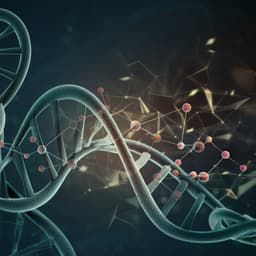
Engineering and Technology
Systematic coarse-graining of epoxy resins with machine learning-informed energy renormalization
A. Giuntoli, N. K. Hansoge, et al.
Discover a groundbreaking coarse-graining approach for modeling epoxy resins that combines energy renormalization with innovative machine-learning techniques. This research, conducted by Andrea Giuntoli, Nitin K. Hansoge, Anton van Beek, Zhaoxu Meng, Wei Chen, and Sinan Keten, showcases impressive agreements in predicting material properties across various crosslinking degrees.
Playback language: English
Related Publications
Explore these studies to deepen your understanding of the subject.







